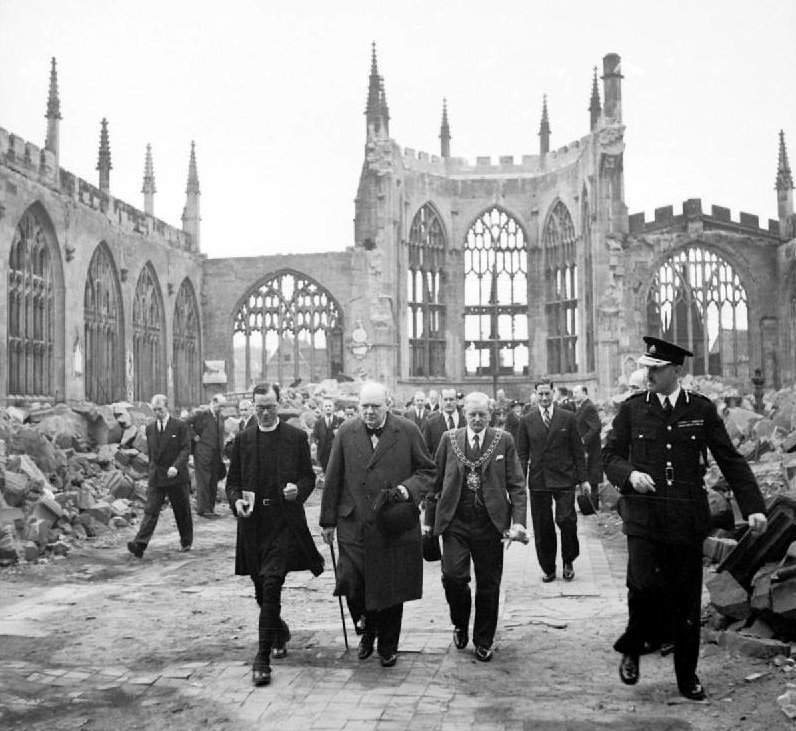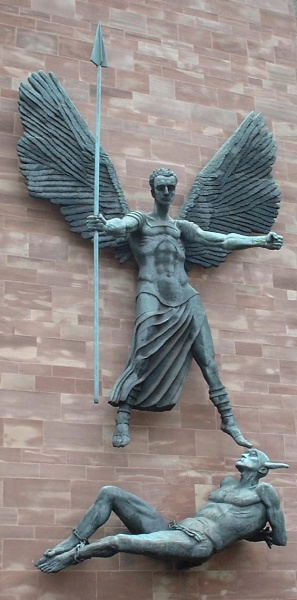1940
The destruction of Coventry Cathedral.
In the summer of 1940, the Luftwaffe, the German airforce, began the Battle of Britain, wave after wave of attacks designed to eliminate the Royal Air Force, as a necessary prelude to a sea-borne invasion of England. By the autumn of that year the Germans had decided that they had failed in their plans and abandoned the notion of a cross-Channel incursion. The Luftwaffe was directed instead to concentrate on bombing British cities to destroy their enemy’s industrial capacity: this made Coventry, with its many armament plants, a logical target.
On the night of November 14 the Germans launched Operation Moonlight Sonata, an attack of 515 bombers dropping 500 tonnes of high explosive and 36,000 incendiary devices. Two-thirds of the city’s factories were hit, at least 500 people were killed, thousands were rendered homeless and St Michael’s Cathedral, a tall Gothic building dating from the 1300s was almost entirely obliterated. The lesson the British earned from this was that such bombing of urban areas could be effective and it justified the massive retaliation they and the American airforce would deal out to German cities in the coming years.
In the post-war years it was suggested that Winston Churchill had been alerted to the raid on Coventry by decoded Enigma signals but chose to give no warning to the city lest the Germans realized the secrecy of their code machines had been compromised. This seems not to have been the case and the British had no warning of the attacks to come.
The grand Gothic building was never rebuilt and a new modern edifice was erected on the spot. This sculpture of St Michael overcoming the Devil is on the outside of the new cathedral.

